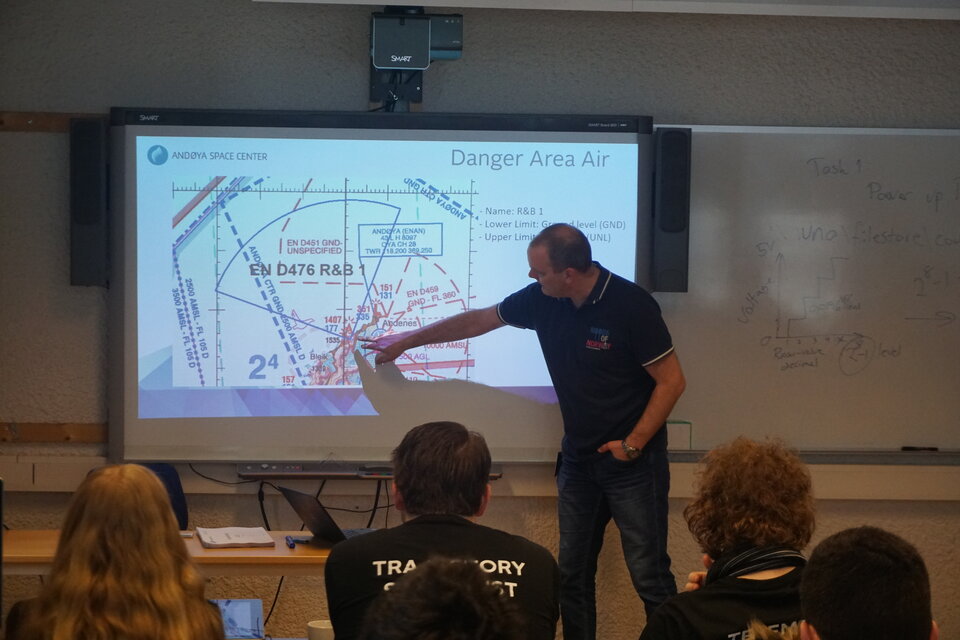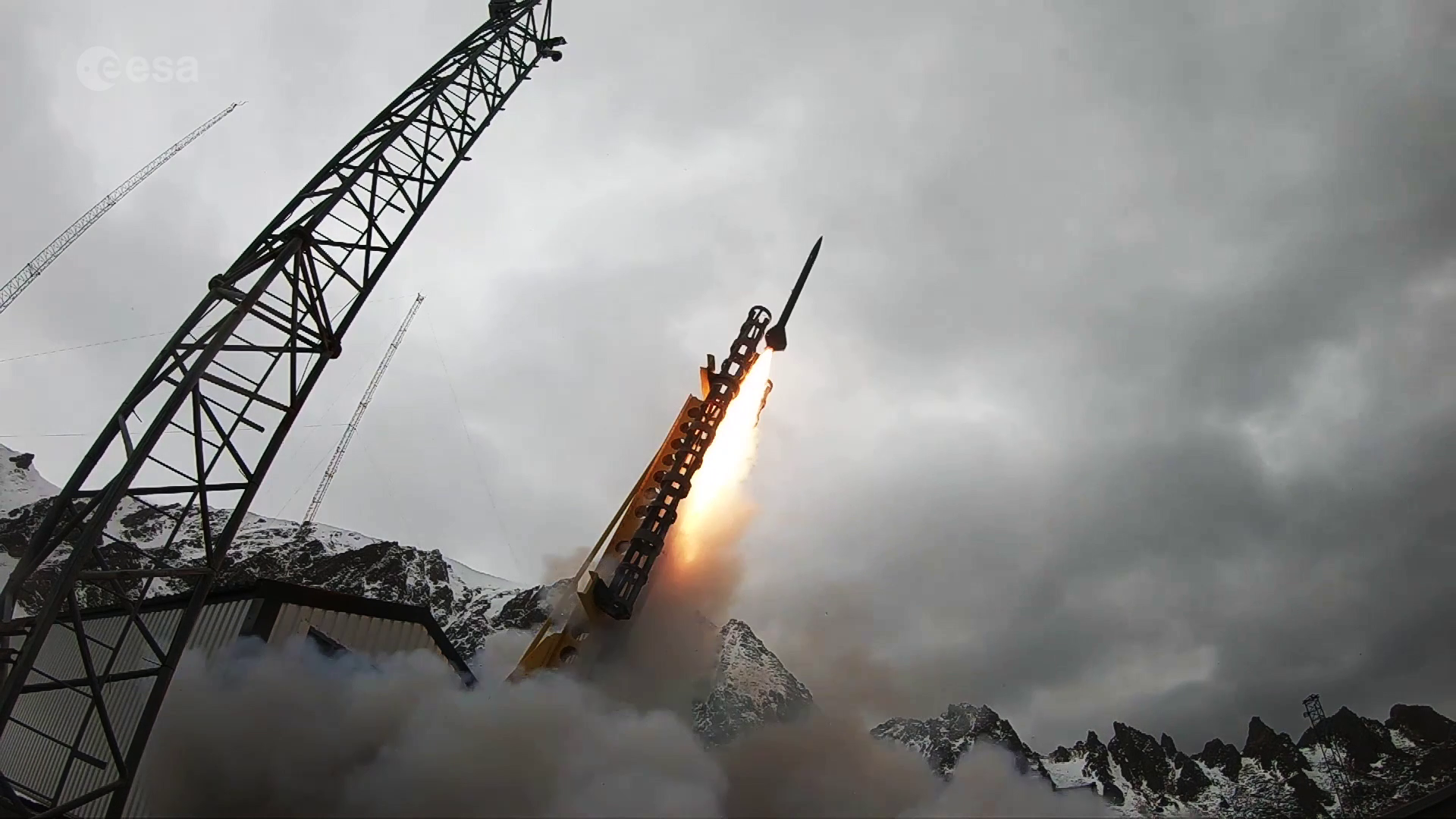Rocket flies for the 2nd Cycle of the Fly a Rocket! programme!
Yesterday 23 students from across Europe (and even further!) saw their student built, and tested, rocket soar into the troposphere marking the culmination of their week at the Fly a Rocket! campaign.
The students have been working hard all week to assemble, test and analyse their payload and rocket, consisting of a suite of sensors, and make predictions on the rocket flight before taking part in the countdown and launch. The rocket, named “Ballistic Re-entry Experiments into the Troposphere”, was launched at 11:53 after a few short delays and reached an apogee of approximately 8km before splashing down safely a few kilometres off the coast.
The launch took place from the Andoya Space Centre, and was supported by NAROM (The Norwegian Centre for Space related Education), the Andoya Space Centre Staff and the ESA Education office. The Fly a Rocket! programme is a collaboration between the ESA Education office, NAROM and the Norwegian Space Agency.
The students participating represented 12 ESA member states and Canada. Prior to the campaign, they all participated in an intense online course on rocketry, orbital dynamics and fundamentals of mission design, as well as virtually meeting one another in a dedicated social media group.

During the campaign the budding rocketeers were treated to several lectures, many with the aim to arm them the necessary skills to build, test and operate their rocket. Additional lectures were offered by ESA, the Norwegian Space Agency and NAROM to inform and inspire the students about their future opportunities related to space and space education. A particular highlight was the special guest lecture from Jon Harr, of the Norwegian Space Agency, who thrilled the participants with stories of his time working at the Guiana Space Center.
The majority of the students’ time was taken in preparing their rocket for flight, working in four groups to ensure everything was ready for flight. One group (‘Trajectory’) was responsible for predicting the rocket’s trajectory, with important inputs taken from a weather balloon, which another team prepared and launched. This team were also responsible for building and testing the GPS sensor. Two groups (‘Payload’ and ‘Sensors’), performed the bulk of the sensor and payload assembly and testing, while the final group (‘Telemetry’) set up and tested the telemetry station to ensure data could be received from the rocket during flight.

During the week the students also had a chance to sample some of the local culture in the town of Andenes and many were lucky enough to see the elusive Aurora Borealis (Northern Lights).
During the countdown students were manning ‘all stations’, and the Range Officer’s voice, Kim, a student from the Netherlands, could be heard loud and clear over the centre’s loudspeakers. Other participants were stationed at the telemetry station and the ‘blockhouse’ and were responsible for ensuring the payload was armed and ready for flight and that the data was been received correctly.
Students also volunteered for the rolls of Principle Investigator (PI) and Co-principle investigator (CoPI), and were responsible for ensuring the sensors were set up correctly and designing the case assignments which will form the post-flight analysis.
Alondra, a student from Spain said of her experience “The opportunity to collaborate with such a international sample of like-minded students has been fantastic and to be able to exchange ideas and working styles is something I will never forget!”.
When asked for his thoughts Lewis, from the UK, reported that “the launch may last a moment, but the memories last a lifetime!”
After the launch, as is tradition with rocket launches, the new space scientists and engineers are treated to a VIP dinner, before, today, having the chance to visit the ALOMAR research station and to present their initial results to the team. The students will also to continue to collaborate and produce a final report to capture all the work they have done and the data they have collected.
Congratulations to all students and organisers of the 2nd Fly a Rocket! campaign!


Access the video


